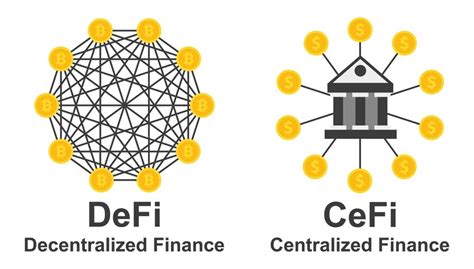The Great divides: cryptocurrency vs centralized finance (DIFI) in the era of decentralized exchanges
In recent years, the world of finances has undergone a significant change. The ascent of cryptocurrencies, blockchain technology and decentralized exchanges (Dexs) has transformed the way we think about money, trading and financial instruments. Two of the most important developments in this space are centralized finance (Defi) and exchanges based on cryptocurrency (CEX). While both offer interesting opportunities for investors and traders, they differ significantly in their principles, benefits and disadvantages below.
Centralized Finance (Defi)
Defi, also known as decentralized finance, is a financial technology that operates entirely outside of traditional centralized systems. DIFI platforms use blockchain technology to provide access to financial services, such as loans, loans, trading and investments. Defi’s best known examples are:
- Uniswap (Ethereum): a decentralized exchange for commercial cryptocurrencies.
2
- Composed

(BTC/ETH): a decentralized interest rates management platform.
The key features of Defi are:
* Decentralized governance : the decision -making process is distributed among the participants, reducing the risk of centralization.
* Immutable contracts : intelligent contracts on the blockchain ensure the execution of agreements without intermediaries.
* cross -chain interoperability : ability to transfer activities through different blockchains.
* Low commissions and liquidity : lower transaction costs and increase in trading volumes.
Pros:
- Increase in safety
: Defi platforms are more resistant to hacking and censorship due to their decentralized nature.
- lower transaction commissions : transaction commissions are generally lower than centralized exchanges.
- Improved user experience : decentralized technology allows greater flexibility in terms of user interface, usability and customization.
Against:
- Limited liquidity : liquidity suppliers often lack resources to absorb large volumes of market data, limiting their potential impact on prices.
2
3
Centralized finance (CEX)
The traditional centralized finance (CEX) operates through a network of banks, investment companies and other financial institutions that act as intermediaries between investors and financial markets. CEXS provides access to financial services, such as trading, loans and investments, but with a centralized control structure.
The key characteristics of the CEX are:
* Centralized infrastructure : banking systems, financial institutions and investment companies provide liquidity and custody for activities.
* Sisted legislation : governments regulate and apply compliance with laws and regulations.
* Institutional knowledge : professionals have vast experience in risk management and in the making of informed decisions.
Pros:
1
- Liquidity management : the centralized infrastructure can manage large volumes of market data, leading to greater liquidity.
- Regulatory compliance : compliance with existing laws and regulations is generally simpler in a centralized environment.
Against:
- Risks of centralization : CEX are vulnerable to centralized control, which can lead to an increased risk of manipulation or hacking.
2.